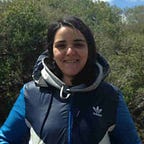Margaret Masterman — Ahead of Her Time
Margaret Masterman was a pioneer in the field of computational linguistics. As a linguist and philosopher she was aware that language shapes the way we think and can tell us about the nature of mind and reasoning. For her work in language processing by computers in 1950' she was said to be way ahead of her time. Plenty of her ideas have now become fundamental insights in the fields of the artificial intelligence and machine translation.
As a student of Ludwig Wittgenstein, she was profoundly concerned about the foundations of theoretical linguistics. When Noam Chomsky was developing his syntactic theories and Richard Montague was supporting a logic-based alternative, she was proposing a “neo-Wittgensteinian” view, to focus on semantics and not syntax, as the foundation for language.
Masterman believed that it was meaning and not grammar, the key to understanding languages. She recognized that natural languages were highly ambiguous as a consequence of their flexibility and extensibility, and that only a criteria based on the meaning of words could hope to reduce such usage to any underlying machine usable notation.
“I want to pick up the relevant basic-situation-referring habits of a language in preference to its grammar”
Margaret thought that ambiguity was not a defect that could be eliminated by switching to a purified language of logic. So, this became one of her major concerns, how to transform or parse written English into machine representation for machine translation.
Masterman’s Thesaurus Model
She postulated that thesauri, as resources with some mathematical structure, could be a guide to the way with which humans process language. Contrary to a dictionary that provides definitions for words, a thesaurus is a list of words grouped together according to similarity of meaning (i.e. a hierarchical structure with groupings of synonyms or near synonyms).
Her lattice-theoretical thesaurus notions were described mostly in prose and exemplified by descriptions of computer algorithm, as it was thought that no computer could hold a coded thesaurus because of the storage space required. It is known that raw and uncoded thesaurus data was stored on punched cards, however, it is not clear how did the thesaurus-based calculations were executed. Actually until recently, it was quite difficult to access Masterman’s research because she never published documents and only internal working papers can be found.
“We are not ladies who lunch!”
Masterman founded and directed in 1955 the Cambridge Language Research Unit (CLRU), which became a major centre in that field that enabled her to accomplish her major achievements. However, one interesting fact of her life was founding, together with the “Dining Group” at the University of Cambridge, the Lucy Cavendish College a college that only accepted female students and fellows.
Women working on research and teaching in Cambridge were unable to hold fellowships under the rules of the University, so they didn’t get to enjoy the intellectual environment and advantages of a collegiate community. But, after a series of meetings, in November 1964, the Dining Group successfully applied to the University for recognition as the Lucy Cavendish Collegiate Society.
‘So it is without towers or turrets, without a chaplain or Porters, without a building of its own or even a foundation grant, Britain’s first graduate college for women has quietly come into being’ — The Times, 11 October 1965.
Margaret Masterman not only opened doors for women’s education and intellectual life in England, but left us with a legacy of ideas for understanding language that only just recently we have come to appreciate.
Advent Calendar — Help us make it a book!
From December 1st until December 24th we plan to release one article each day, highlighting the life of one of the many women that have made today’s computing industry as amazing as it is: From early compilers to computer games, from chip design to distributed systems, we will revisit the lives of these pioneers.
Each article will come with an amazing illustration by @SebastianNavasF
If you want to see these series to become a book with expanded articles and even more illustrations by Sebastián, then subscribe to our newsletter below.
Credits
- Illustration: Sebastián Navas
References
- Priss, U., & Old, L.J. (2009). Revisiting the Potentialities of a Mechanical Thesaurus. ICFCA.
- Masterman, M. (2005). Language, cohesion and form. Cambridge University Press.
- Hutchins, W. J. (Ed.). (2000). Early years in machine translation: memoirs and biographies of pioneers (Vol. 97). John Benjamins Publishing.
- Williams, W., & Knowles, F. (1987). Margaret Masterman: In Memoriam. Computers and Translation, 2(4), 197–203. Retrieved from http://www.jstor.org/stable/25469921
- History of Lucy Cavendish College (https://www.lucy-cav.cam.ac.uk/about-us/history/)
- Wikipedia Profile (https://en.wikipedia.org/wiki/Margaret_Masterman)
